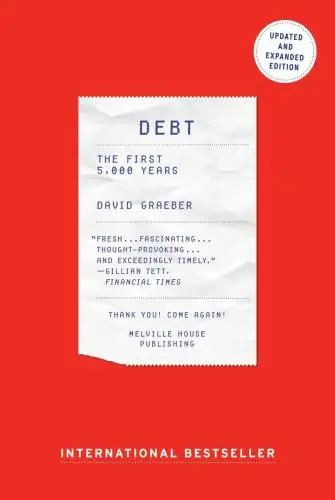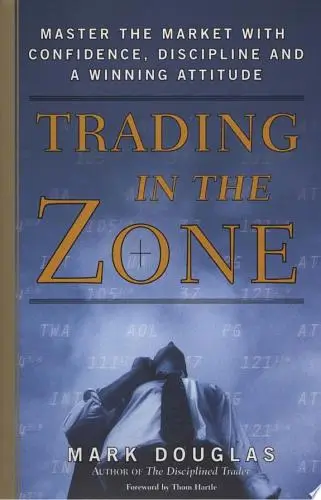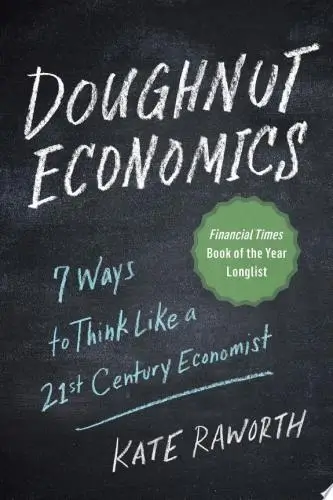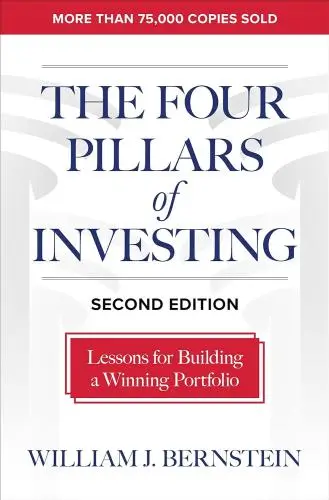
Debt
The First 5,000 Years
What's it about?
Debt: The First 5,000 Years by David Graeber takes you on a fascinating journey through the history of debt, revealing how economic systems have shaped human relationships and societies. You'll discover the surprising ways debt has influenced everything from ancient barter systems to modern financial crises. Graeber challenges conventional wisdom, showing that debt is more than just an economic instrument but a powerful force in human history. This book will transform your understanding of financial systems and their impact on social structures.
About the Author
David Graeber was an American anthropologist and activist, best known for his contributions to economic anthropology and social theory. Author of "Debt: The First 5000 Years" and "Bullshit Jobs," his work critically examines economic systems, bureaucracy, and the nature of work, offering insightful perspectives on capitalism and societal structures.
10 Key Ideas of Debt
The Myth of Barter: Unraveling the Fiction of a Moneyless Exchange System
The concept challenges the traditional economic narrative that money was invented to replace the inefficient barter system.
It argues that there is no evidence of any economy based purely on barter.
Instead, credit systems and debt predate the use of money.
Communities historically relied on mutual obligations and trust, with goods and services exchanged based on an understanding of reciprocal needs rather than a strict barter system.
This idea reshapes our understanding of economic history, emphasizing the role of social relationships and trust in facilitating exchanges long before the advent of coinage.
Learn DeeperReflect on your personal and community relationships: Consider how trust and mutual obligations play a role in your exchanges with others. This could be as simple as lending a book to a friend with the understanding they'll return it, or more complex like sharing resources in a community garden.
Initiate or participate in systems of exchange that don't rely on money: Engage in or start a barter system within your community for goods and services. This could be formal, like a community swap meet, or informal, like trading skills (e.g., tutoring for gardening help).
Foster a culture of reciprocity and trust in your interactions: When engaging in any form of exchange, focus on building relationships and trust rather than just the transaction. This could mean offering your skills or resources without an immediate expectation of return, trusting that your community will support you in kind when needed.
Educate others about the history and importance of non-monetary exchanges: Share insights from 'Debt' by David Graeber with friends, family, or community groups to encourage a broader understanding of economic systems and the value of trust and mutual aid.
- Example
A neighborhood group creates a 'time bank' where members can offer services like babysitting, home repairs, or language lessons. Instead of paying for these services, each hour of work is 'banked' and can be 'withdrawn' when the member needs a service themselves.
- Example
A local community garden operates on a sharecropping system, where individuals contribute labor to the garden in exchange for a share of the harvest. This system relies on mutual trust and the understanding that everyone's work contributes to the collective benefit.
The Moral Confusions Around Debt: How Societies Have Viewed Debt Through a Moral Lens
This concept explores how debt has been morally framed throughout history, often seen as a moral failing of the debtor.
This perspective has justified harsh penalties for those unable to repay debts, including slavery, imprisonment, or social ostracism.
However, this view ignores the systemic and structural factors that lead to debt, such as economic inequality, lack of access to resources, and unforeseen circumstances.
By examining the moral underpinnings of attitudes towards debt, we can better understand the complex dynamics at play and advocate for more compassionate and equitable financial systems.
Learn DeeperReflect on Your Own Attitudes Towards Debt: Take some time to consider how you view debt, both your own and that of others. Are you holding onto moral judgments that might not fully account for the complexities behind why people fall into debt? Reflecting can help foster a more compassionate and understanding approach towards financial difficulties.
Educate Yourself and Others About the Structural Causes of Debt: Learn more about the economic and social factors that lead to debt, such as income inequality, lack of access to affordable healthcare, education, and housing. Share this knowledge with friends, family, or through social media to help shift the conversation from individual failure to systemic change.
Support Policies and Organizations That Aim for Financial Equity: Advocate for and support policies that aim to reduce economic inequality and provide safety nets for those in financial distress. This could include supporting universal healthcare, affordable housing initiatives, or organizations that provide financial assistance or education.
Practice Compassionate Lending: If you are in a position to lend money, do so with an understanding of the pressures your debtor may be facing. Consider flexible repayment plans, or if possible, offer support without the expectation of repayment. This approach fosters a more humane and supportive financial environment.
- Example
A friend confides in you about their struggle with student loan debt. Instead of viewing it as a personal failing, you discuss the broader issue of rising education costs and limited financial aid, offering support and understanding.
- Example
You participate in a community initiative that provides free financial literacy workshops. These workshops help attendees understand how systemic issues contribute to personal debt and offer strategies for managing finances more effectively.
The Role of Debt in Building Social Cohesion: Understanding Debt Beyond Economic Transactions
Debt is not merely a financial instrument but a crucial element in forming and maintaining social bonds.
In many societies, debt creates ongoing relationships between individuals, binding people together through a web of mutual obligations.
These relationships are not inherently negative; they can foster cooperation, solidarity, and trust within communities.
Recognizing debt as a fundamental component of social life challenges the notion of debt as purely economic and opens up possibilities for reimagining community relations and support systems.
Learn DeeperReflect on Your Own Debts and Credits: Consider not just financial debts but also favors, time, and emotional support you owe or are owed. Acknowledge these as part of your social fabric and think about how they influence your relationships.
Initiate Conversations About Mutual Support: With friends, family, or community members, discuss ways you can support each other without necessarily involving money. This could be through skill exchanges, sharing resources, or offering time.
Create a Support Network: Build a network based on mutual aid where members can request and offer help. This could range from babysitting to meal sharing, reinforcing the idea that debt and credit can foster community cohesion.
Acknowledge and Appreciate Acts of Support: When someone helps you, recognize it as an addition to your social debt to them. Show appreciation and look for ways to reciprocate, strengthening the bond between you.
- Example
In a neighborhood, residents could form a cooperative group where they lend each other tools and appliances, reducing the need for everyone to purchase their own. This system of borrowing and lending creates a web of mutual obligations and fosters a sense of community.
- Example
A group of friends might establish a 'time bank' where they exchange hours of expertise or labor instead of money. For example, one person might offer legal advice in exchange for another's graphic design skills, creating a balanced system of give-and-take that deepens their connections.
The Evolution of Money from Social Trust to Abstract Currency: Tracing the Transformation
Money's development from tangible objects to abstract representations reflects a shift in the basis of economic transactions from personal trust to impersonal systems.
Initially, money functioned as a measure of mutual obligations within a community, grounded in social relationships.
Learn DeeperReflect on Your Personal and Professional Relationships: Consider how trust plays a role in your economic transactions. Are there ways you can strengthen trust to improve these interactions? For example, being more transparent in your dealings or honoring commitments promptly.
Educate Yourself on the Nature of Money and Transactions: Take some time to understand the history and evolution of money. This knowledge can help you make more informed decisions about using various forms of currency, from cash to digital payments.
Evaluate the Impersonal Systems You Rely On: Look at the financial institutions and systems you use. Understand their role in facilitating your economic activities and consider if there are more personal or community-based alternatives that might offer benefits.
Incorporate Barter or Trade Systems into Your Life: Experiment with direct exchanges of goods or services within your community. This can foster stronger social bonds and provide a practical understanding of money’s original function as a measure of mutual obligations.
Advocate for Systems That Enhance Trust: Support initiatives and technologies that aim to make economic transactions more transparent and trustworthy, such as blockchain or local currencies.
- Example
If you're a freelancer, consider accepting a portion of your payment in trade or barter, especially with long-term clients. This could deepen trust and potentially open up new opportunities for both parties.
- Example
Participate in or organize a local swap meet or skill-sharing event. This not only allows for the exchange of goods and services without the direct use of money but also helps in understanding the value of trust and community in economic transactions.
The Impact of Military Conquest on the Spread of Coinage: Warfare as a Catalyst for Economic Change
The spread of coinage and the transition from economies based on credit to those dominated by cash can be linked to military conquests.
Armies required a method of payment that was universally accepted, portable, and could facilitate transactions with conquered peoples and mercenaries.
This need accelerated the adoption of coinage as a dominant form of currency, fundamentally altering local economies and trade practices.
The militaristic origins of coinage highlight the interplay between warfare, economic systems, and the standardization of money.
Learn DeeperReflect on the role of currency in your personal finances. Consider how you use cash, credit, and digital payments in your daily life. Are there areas where switching the form of payment could offer benefits, such as better tracking of expenses or improved security?
Explore the history of money in your region. Understanding the origins and evolution of currency in your area can provide insights into current economic systems and potentially identify alternative forms of trade and investment that are less reliant on traditional banking systems.
Consider diversifying your investment portfolio. Given the historical link between military conquests, coinage, and economic shifts, it's wise to diversify investments to protect against market volatility. This could include investing in commodities, cryptocurrencies, or other assets not directly tied to the performance of a single economy.
Engage in community trade systems. Look into local barter networks or community currencies. These systems can offer a practical application of how economies function without reliance on standard coinage, providing both economic and social benefits.
- Example
If you typically use credit cards for most transactions for convenience and rewards, consider using cash for smaller, daily purchases to avoid overspending. Physically handing over money can make you more mindful of expenditures.
- Example
A practical example of diversifying your investment portfolio might involve allocating a portion of your savings into precious metals like gold or silver, which have historically held value even when traditional currencies have faltered.
Deeper knowledge. Personal growth. Unlocked.
Unlock this book's key ideas and 15M+ more. Learn with quick, impactful summaries.
Read Full SummarySign up and read for free!
Debt Summary: Common Questions
I just finished reading "Debt: The First 5,000 Years" by David Graeber, and one quote that really stuck with me is: "Debt is the pervasive feature of social life that most of us overlook, precisely because it's so pervasive." Graeber delves into the history and anthropology of debt, challenging common perceptions and shedding light on its complex role in societies past and present.
The book had me hooked from the start with its unique perspective on something we often take for granted. Graeber's insights into the origins of debt, its moral implications, and how it shapes human interactions made me rethink my understanding of economics and social structures. While some parts were quite dense and required careful reading, the overall exploration was eye-opening and thought-provoking.
If you enjoy thought-provoking non-fiction that challenges conventional wisdom and offers a fresh take on a fundamental aspect of society, I highly recommend giving "Debt" a read. It's a fascinating journey through history and anthropology that will leave you with a new appreciation for the pervasive influence of debt.
Experience Personalized Book Summaries, Today!
Discover a new way to gain knowledge, and save time.
Sign up for our 7-day trial now.
No Credit Card Needed

Similar Books

The Art of Spending Money
Morgan Housel
Trading in the Zone
Mark Douglas
Doughnut Economics
Kate Raworth
A study guide for Barbara Ehrenreich's "Nickel and Dimed: On (Not) Getting By in America"
Gale, Cengage Learning
Bitcoin For Dummies
Prypto
The Barefoot Investor
Scott Pape
Money Has No Value
Samuel A. Chambers
Financial Peace
Dave Ramsey
Capital in the Twenty-First Century
Thomas Piketty
The Four Pillars of Investing
William J. BernsteinTrending Summaries

Peak
Anders Ericsson
Never Split the Difference
Chris Voss
Smart Brevity
Jim VandeHei
The Psychology of Money
Morgan Housel
The First 90 Days
Michael D. Watkins
Atomic Habits
James Clear
Thinking, Fast and Slow
Daniel Kahneman
The Body Keeps the Score
Bessel van der Kolk M.D.
The Power of Regret
Daniel H. Pink
The Compound Effect
Darren HardyNew Books

The Art of Spending Money
Morgan Housel
$100M Offers
Alex Hormozi
A Candle for Kiri
Edna Mae Holm
Principles of Marketing, Global Edition
Gary Armstrong
Serpent Rising: The Kundalini Compendium
Neven Paar
Feeling Is the Secret
Neville Goddard
The 100 Best Business Books of All Time
Jack Covert
My Oxford Year
Julia Whelan
Trading in the Zone
Mark Douglas
